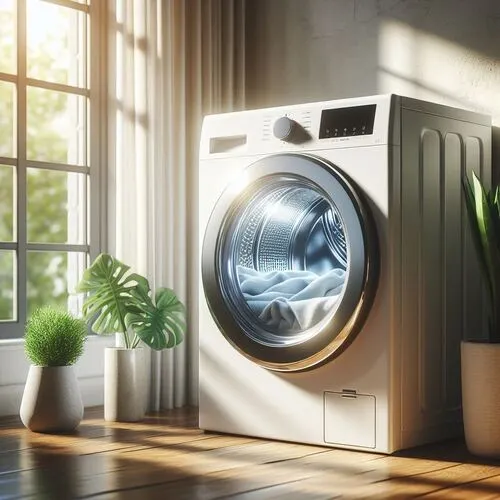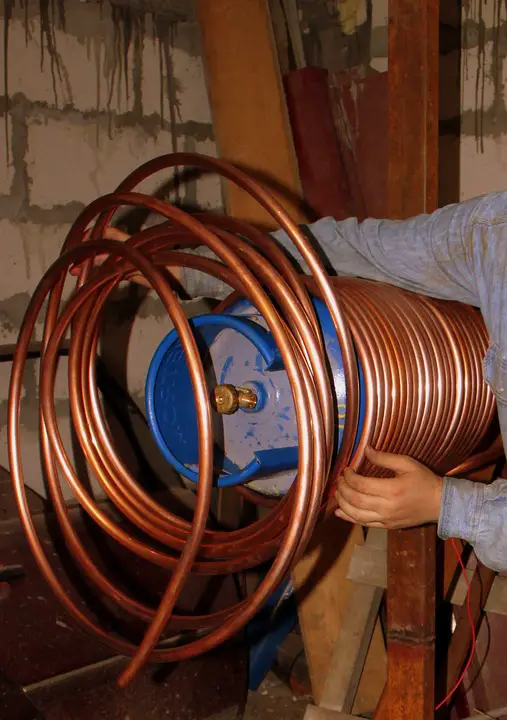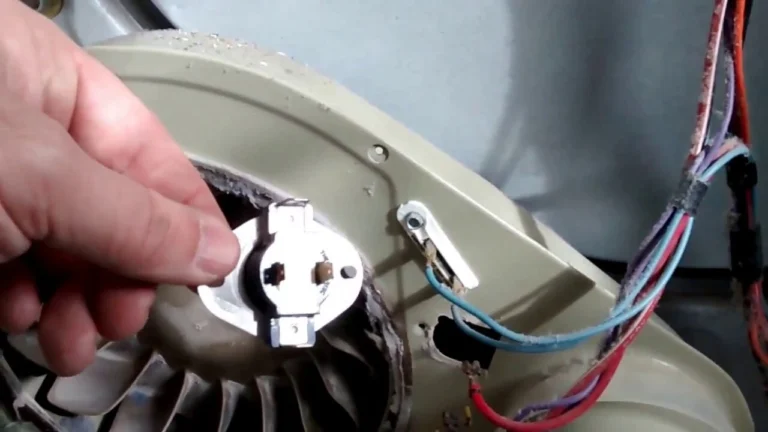How to Clean Your Dryer Vent: A Comprehensive Guide
Introduction
The importance of maintaining a clean dryer vent cannot be overstated. Not only does it contribute to the efficient operation of your dryer, but it also plays a crucial role in preventing potential hazards, such as fire. Over time, lint and debris can accumulate in the vent, reducing airflow and creating a breeding ground for safety issues. This article will guide you through the essential steps of cleaning your dryer vent to ensure both efficiency and safety.
what are The Dangers of Neglecting Dryer Vent Maintenance?
A clogged dryer vent poses serious risks, with one of the most significant being the potential for a fire. The lint that accumulates in the vent is highly flammable, and if ignited, it can lead to a destructive and life-threatening situation. Additionally, a clogged vent forces the dryer to work harder, reducing its overall performance and lifespan. Neglecting vent maintenance may also result in higher energy bills, as the dryer consumes more energy to operate inefficiently.
what are The Steps to Clean Your Dryer Vent?
Step 1: Gather Materials
Before embarking on the cleaning process, ensure you have the necessary materials:
- Vacuum cleaner with hose attachment
- Dryer vent cleaning kit (optional)
- Screwdriver (if needed to remove vent cover)
- Gloves
- Flashlight
- Bucket
- Dust mask
Step 2: Disconnect the Dryer
Begin by ensuring the dryer is safely disconnected:
- Unplug the dryer from the electrical outlet.
- Turn off the gas supply valve (for gas dryers).
- Pull the dryer away from the wall.
Step 3: Locate and Remove the Vent Cover
Identify the vent cover on the back of the dryer and follow these steps:
- Use a screwdriver to remove the screws securing the cover.
- Carefully remove the cover and set it aside.
Step 4: Clean the Vent Opening and Dryer Duct
Use the vacuum cleaner hose attachment to remove lint and debris:
- Follow the instructions provided with the kit for a deeper cleaning.
- Continue cleaning until the lint is completely removed.
Step 5: Inspect for Damage
Check the vent hose and duct for any damage:
- Look for tears, rips, or blockages.
- Replace any damaged sections immediately.
Step 6: Reassemble and Reconnect
Complete the process by reassembling and reconnecting:
- Secure the vent cover with screws.
- Push the dryer back into place.
- Turn on the gas supply valve (for gas dryers).
- Plug the dryer back into the electrical outlet.

Additional Tips
- Clean your dryer vent at least once a year, or more often in dusty environments or homes with multiple pets.
- Consider professional dryer vent cleaning services for longer or hard-to-reach ducts.
- Avoid using flammable solvents or chemicals during the cleaning process.
- Regularly check and clean the lint filter after each drying cycle.
faq about How to Clean Your Dryer Vent
Can I Clean My Dryer Vent Myself?
Yes, cleaning your dryer vent is a task that can be done independently. With the right materials and a step-by-step guide, homeowners can effectively remove lint and debris from their dryer vents. However, it’s essential to follow safety precautions, such as disconnecting the dryer from power sources, to prevent accidents.
How Often Should Dryer Vents Be Cleaned?
Dryer vents should be cleaned at least once a year to maintain optimal performance and safety. However, if you live in a dusty environment or have multiple pets, more frequent cleaning may be necessary. Regular inspection of the vent is crucial, and any signs of blockage or reduced airflow should prompt immediate cleaning.
Can You Use a Leaf Blower to Clean Dryer Vent?
While using a leaf blower may seem like a convenient option, it is not recommended for cleaning dryer vents. Leaf blowers may push lint further into the vent, creating a more significant blockage. Instead, it’s advisable to use specialized tools like a vacuum cleaner with a hose attachment or a dryer vent cleaning kit for effective lint removal.
How Do You Tell If Your Dryer Vent Is Clogged?
Several signs indicate a clogged dryer vent:
- Long Drying Times: Clothes taking longer than usual to dry.
- Excessive Heat: The laundry room becoming unusually hot during dryer operation.
- Burning Smell: A burning odor while the dryer is running.
- Visible Debris: Lint or debris around the dryer vent opening.
- Fluctuating Dryer Performance: Inconsistent drying results despite proper settings.
If you notice any of these signs, it’s crucial to inspect and clean the dryer vent promptly to prevent potential hazards and ensure efficient operation.

Conclusion
In the world of laundry appliances, one common question that often arises is, Does an Electric Dryer Need a Vent? Electric dryers, similar to their gas counterparts, greatly benefit from proper ventilation. While electric dryers don’t produce combustion byproducts, venting remains crucial to expel moist air and prevent mold growth. Understanding the necessity of vents for electric dryers is essential for homeowners seeking to maintain efficient and safe dryer operation.
For those facing the challenge of not having an exterior vent, the question becomes, How to Vent a Dryer Without a Vent to Outside. Not all living spaces have the luxury of an outdoor vent for dryers. Exploring creative solutions for venting a dryer without direct access to the outdoors becomes imperative. Discover practical tips and alternatives to ensure effective ventilation in confined or unconventional settings.
When it comes to the components that make up a functional and safe venting system, understanding Dryer Vents is crucial. Delve into the types and materials of dryer vents, and comprehend the significance of keeping vents clear to maintain optimal dryer performance. This exploration provides valuable insights into the essential aspects of dryer vent systems.
A common query that arises is whether Can You Use PVC for Dryer Vent? PVC, known for its versatility, is suitable for dryer vents. Uncover considerations surrounding the use of PVC for dryer vent installations. Learn about alternative materials and best practices to ensure a safe and effective venting system.
Encounters with wildlife, such as birds nesting in dryer vents, bring forth the concern addressed by Bird in Dryer Vent. Explore potential issues and risks associated with having a bird in your dryer vent, and discover humane solutions to address this common problem and prevent future occurrences.
When it comes to sealing dryer vent components, the question of Can You Use Duct Tape on a Dryer Vent? often arises. Understand the limitations and potential risks of using duct tape on dryer vents. Explore alternative solutions and best practices for securing and sealing dryer vent components effectively.
Temperature considerations play a crucial role in the safe operation of dryer vents, prompting the question, How Hot Does a Dryer Vent Get?. Gain insights into how hot dryer vents can get during regular use. Learn about potential risks and precautions to ensure the longevity and safety of your dryer vent system.
For those with roof-mounted dryer vent systems, considerations surrounding installation and maintenance are covered by Roof Dryer Vent. Explore unique challenges associated with roof dryer vents and learn about installation best practices. Ensure your roof dryer vent is both functional and safe.

Finally, for gas dryer owners, the question of Do Gas Dryers Need to Be Vented? arises. Similar to electric dryers, gas dryers require proper venting for efficient and safe operation. Dive into the specifics of venting gas dryers, understanding the safety implications and necessary precautions for optimal performance.
In conclusion, navigating the world of dryer vents involves addressing specific questions related to their importance, materials, and considerations for different types of dryers. Whether it’s understanding the necessity of vents, exploring alternative solutions, or ensuring proper materials, this guide aims to provide comprehensive insights into maintaining the optimal performance and safety of your dryer vent system.
Regularly cleaning your dryer vent is a simple yet effective way to ensure the safety and efficiency of your appliance. By following these steps and tips, you contribute to a safer home environment, reduce the risk of fire, and extend the lifespan of your dryer. Don’t overlook this essential maintenance task; make it a part of your routine for optimal performance and peace of mind.
For more information and assistance, refer to resources such as Dryer Vent Wizard or consult your appliance manufacturer’s guidelines. Stay safe, keep your dryer running smoothly, and enjoy the benefits of a well-maintained home appliance.







